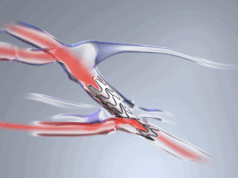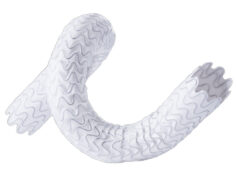 Eight minutes of Mozart have been found to reduce the pain of cannulation for haemodialysis patients, though not their level of anxiety, in a recent study published in the Clinical Journal of the American Society of Nephrology (CJASN). High levels of pain during cannulation are associated with patients skipping dialysis sessions, while missing just one over several months has been associated with a 68% higher rate of mortality. This risk, as well as the cost associated with existing treatments for cannulation pain, prompted the study authors, led by Emi Inayama (Mihama Narita Clinic, Chiba, Japan), to investigate methods for its management.
Eight minutes of Mozart have been found to reduce the pain of cannulation for haemodialysis patients, though not their level of anxiety, in a recent study published in the Clinical Journal of the American Society of Nephrology (CJASN). High levels of pain during cannulation are associated with patients skipping dialysis sessions, while missing just one over several months has been associated with a 68% higher rate of mortality. This risk, as well as the cost associated with existing treatments for cannulation pain, prompted the study authors, led by Emi Inayama (Mihama Narita Clinic, Chiba, Japan), to investigate methods for its management.
Building on a study by Jin Hyung Lee (Ewha Womans University, Seoul, Korea) that has suggested music is an effective reliever of pain in other medical settings, Inayama et al designed their own that explored its capacity for doing the same in a haemodialysis setting. It was a prospective, multicentre, single-blind, crossover, randomised controlled trial taking place across five dialysis facilities in Japan. There, 121 patients were selected who were over the age of 20 and who had been undergoing dialysis for more than six months at the beginning of the trial. Of these, 86 were men and 35 were women, while their median age was 64. Those with impaired hearing were excluded.
Enrolled patients were randomly allocated to two groups, both of which experienced haemodialysis twice with no sound, once with white noise played as a control and once with Mozart’s “Sonata for Two Pianos in D Major, K.448”, which has been selected for other studies exploring music’s analgesic properties including James Stephen Jenkins’ (Ochsner Medical Center, New Orleans, USA) into the “Mozart effect”. The patients also experienced the white noise and music for eight minutes before cannulation. The primary endpoint was visual analogue scale (VAS) pain score reported by patients immediately after cannulation, while their VAS anxiety score was among the secondary endpoints.
The VAS pain score for patients who heard Mozart was 12% lower than for those who heard the control of white noise, which the authors described as “significantly lower”. The 8% reduction on the VAS anxiety scale, meanwhile, they called “not significant”, while “the per-protocol set results were similar”. The study did have its limitations, including its gender imbalance. This is especially notable given that female gender has been associated with fear of needles by studies such as that of Jennifer McLenon and Mary A M Rogers (University of Michigan, Ann Arbor, Michigan) in 2018. It was not considered, either, whether the analgesic effect of Mozart in particular is dependent on a patient’s cultural background and personal enjoyment of the genre or composer.
Nevertheless, the study authors asserted that their trial was “well-designed” while demonstrating a statistically significant improvement in a patient’s level of pain from cannulation. Their final remark was that “the effect size of music alone might not be clinically sufficient to control pain”, but that as a “safe and inexpensive adjunct pain relief method” alongside others it showed promise.











